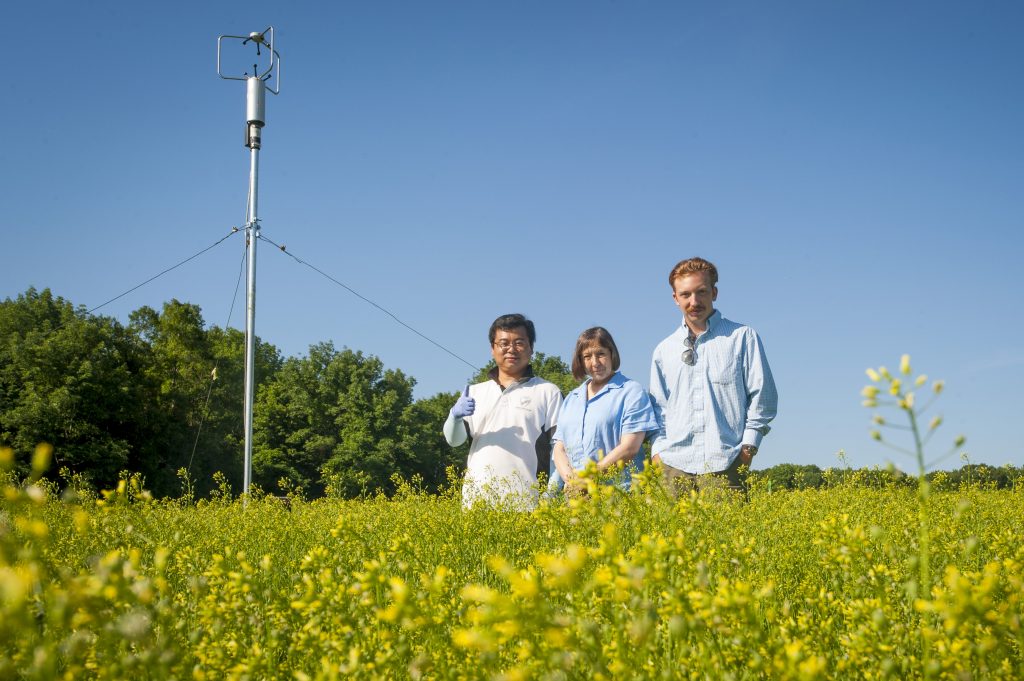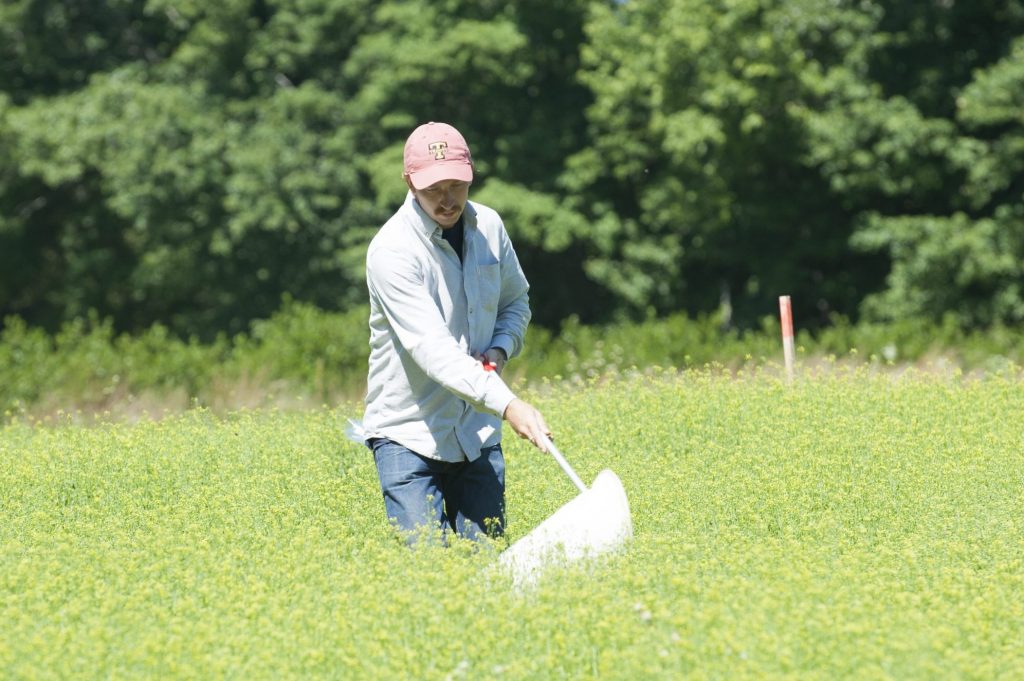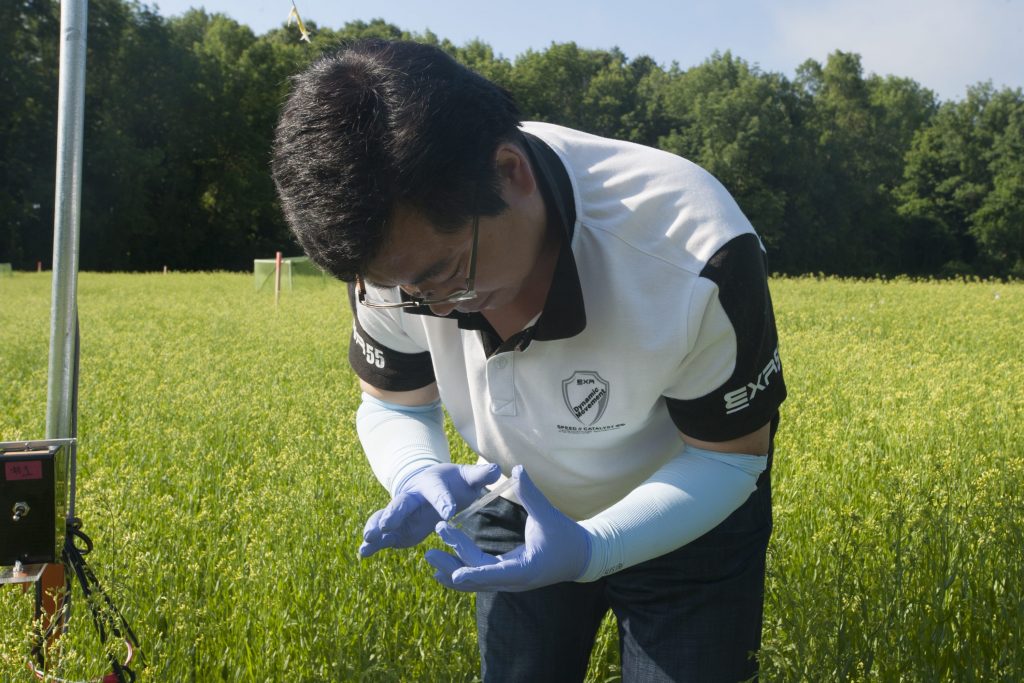
Insects buzzing over millions of yellow camelina flowers at the UConn Plant Science Farm create a bucolic scene. But belying the simplicity of its appearance, the field is actually a sophisticated research project conducted by plant scientists investigating the ecology of a new high-tech crop.
The research team is led by professor emerita Carol Auer and supported by a grant from the Biotechnology Risk Assessment Grant Program, an initiative of the USDA’s National Institute of Food and Agriculture. Auer and her research team have been gathering information about Camelina sativa, an oilseed crop that has never been grown commercially in Connecticut. Camelina has been subject to genetic modification to make products such as biofuels, dietary supplements, and bioplastics, and could become popular with farmers in the U.S.
Good baseline data about crop biology and ecology are essential to many regulatory decisions. — Carol Auer
Over the past decade, research groups around the world have been working to introduce new traits to camelina. A project in the U.K., for example, inserted genes from marine algae into camelina, forcing the seeds to produce high concentrations of omega-3 fatty acids. This important nutritional compound could be extracted to feed salmon in aquaculture facilities or improve human diets. Other projects have optimized camelina for biodiesel and jet fuel.
Yet all new technologies carry some uncertainty, and these new camelina varieties are no exception. Camelina has a long history as a weed in North America, and it is closely related to other common weeds in the mustard family. This raises questions about future interactions between cultivated plants and their surrounding environment.
One of Auer’s main goals is to understand gene flow, the movement of genes between individual plants within a species or between closely related plant species. Gene flow between plants depends upon the movement of pollen by wind or insects, and the fields at UConn have clearly shown that camelina attracts pollinators such as honey bees, native bumble bees, and flies.
Graduate student Richard Rizzitello has been studying these insect visitors. “If camelina is planted across the U.S., it could provide good food resources for bees and other pollinators that are in decline,” he says. “But we need to know if the new traits from genetic engineering could cause problems in the environment. For example, we don’t want camelina to change from a cultivated plant to an aggressive weed.”
Over the next few years, the UConn research team will share their information about camelina gene flow and weed dynamics with farmers and other groups.
Auer’s research will also help another important audience: government regulators. It’s a group she knows well. From 2002 to 2003, she held a fellowship from the American Association for the Advancement of Science (AAAS) to study risk assessment and agricultural biotechnology policy at USDA in Washington, D.C. In 2008, Auer used her sabbatical leave to temporarily join the EPA, which also has responsibility for crop biotechnology regulation.
“These experiences have given me a lot of insight into the challenges that regulators face. That’s a big driver for me in these projects,” says Auer. “Although it sounds simple, good baseline data about crop biology and ecology are essential to many regulatory decisions. In the long run, this research will help us manage biotechnology and improve coexistence in our farming systems.”
Adapted from an article by Michael Clausen that was published in the College of Agriculture, Health, and Natural Resources newsletter, Naturally@UConn.





